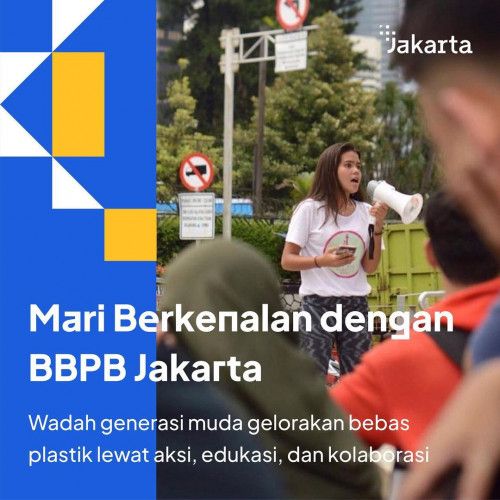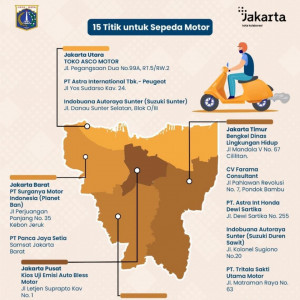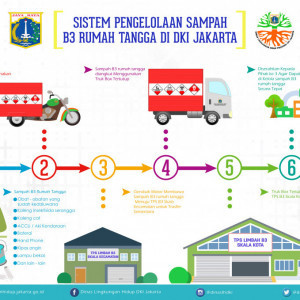FAQ
Explore the action filter feature to see what initiatives are running.
Other pollutants include gases such as nitrogen dioxide (NO2) formed by fuel combustion for heating, power generation, and in vehicle engines; sulfur dioxide (SO2) formed by combustion of sulfur-containing fossil fuels for domestic heating, power generation, and motor vehicles; ground-level ozone (O3) formed by photochemical reactions (reactions in the sunlight) between emissions from vehicles and industry (e.g. nitrogen oxides, volatile organic compounds); and carbon dioxide (CO2) formed by vehicles. For further information about air pollution, please visit this link.
Air pollution also contributes to the acceleration of global warming due to the increase in pollutants that remain in the atmosphere, and when it accumulates in the atmosphere, the Earth's temperature rises and traps heat like a blanket. Learn more at UNEP.
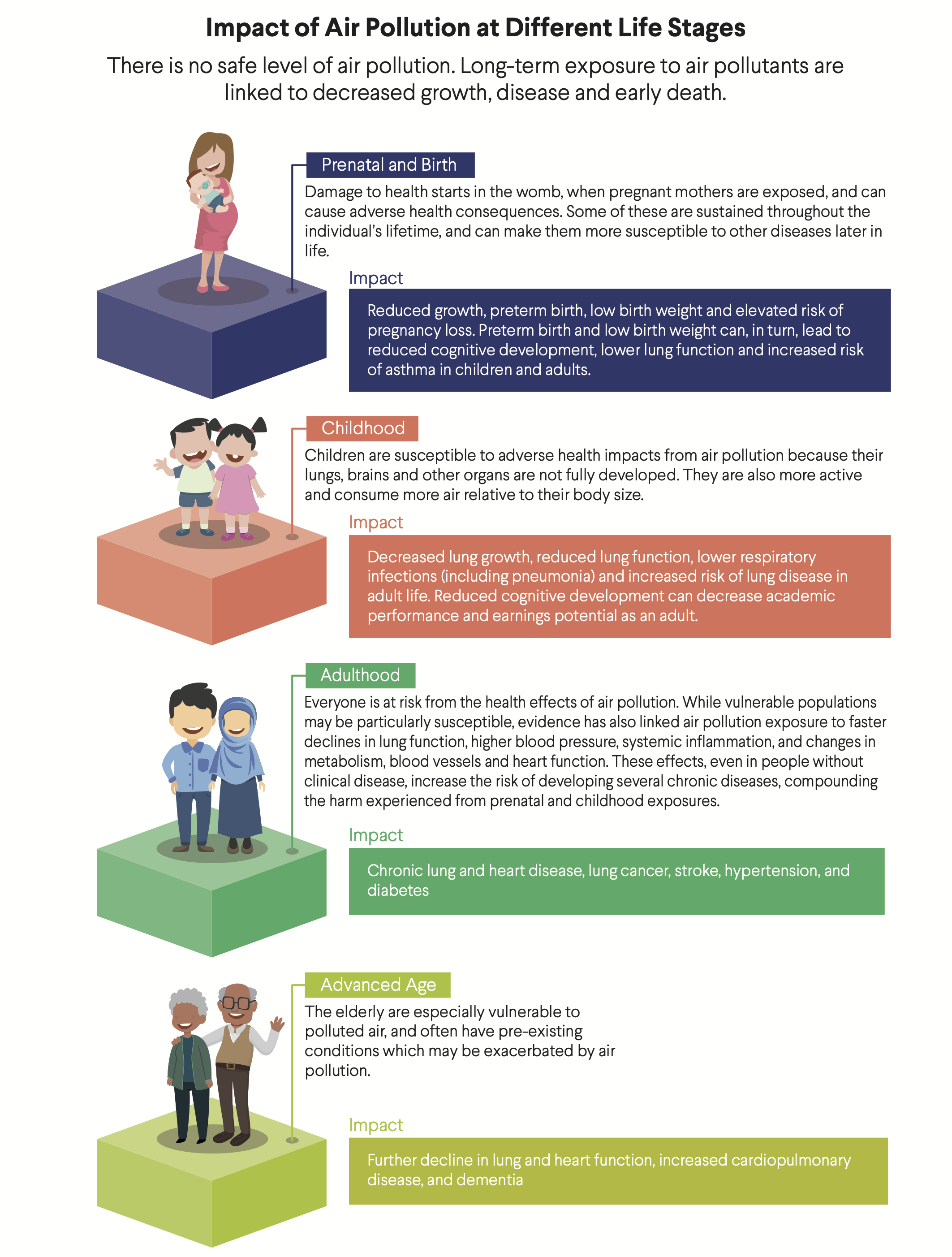
Impact of Air Pollution by Vital Strategies
Source: Toward Clean Air Jakarta by Vital Strategies
The DKI Jakarta Environmental Service has 5 Ambient Air Quality Monitoring Stations (SPKUA), which are located at the HI Roundabout (DKI 1), Kelapa Gading (DKI 2), Jagakarsa (DKI 3), Lubang Buaya (DKI 4), and Kebon Jeruk (DKI 5). The results of air quality monitoring from these 5 points can be accessed by anyone via the JAKI application or the Dinas Lingkungan Hidup DKI Jakarta website.
DKI Jakarta uses two methods to identify sources of pollution, the first is using a Source-Based Approach Using Emissions Data, which involves creating an inventory of air pollution emissions by calculating the number of emissions released by known sources (such as transportation) in DKI Jakarta. This approach uses emission inventory data, meteorological data and chemical transport models to estimate the sources that contribute to ambient air pollution concentrations. The second method is the Receptor-Based Approach Using Air Filter Samples, where determining the source of pollution in a city is to collect a sample of ambient air filters, analyze the chemical composition of the sample, and match its chemical profile to emissions from various fuels. This complex technical approach relies on the capabilities of researchers and complex laboratory analyses.
Read the FAQ 'Where does Jakarta's air pollution come from? to find out the results.
These findings are consistent with a source apportionment study conducted by Vital Strategies, Bandung Institute of Technology and the Environmental Agency of DKI Jakarta in 2020 which used a receptor-based approach and sampled PM2.5 contribution during the rainy and dry seasons. This study found that from the sample collection locations, the largest PM2.5 contributor was the transportation sector, namely 32-41% in the rainy season and 42-57% in the dry season. This study also found coal burning, construction activities and open burning of PM2.5 sources in Jakarta. To learn more, read the article 'Finding Sources of Pollution in the Air through Source Apportionment'.
To find out that the air around us has been polluted, there are several standards that are applied, both daily and yearly. For daily or air conditions at that time, each country has a different index to inform the air condition at that time. In Indonesia, this standard is known as the Air Pollution Standard Index (ISPU) for various important pollutants. The index describes the current state of air quality and recommended actions based on its health impact and is usually divided into several colors depending on the health recommendations. This index serves as a notification for people who want to do outdoor activities. The following are some indexes in the ISPU based on the Regulation of the Minister of the Environment:
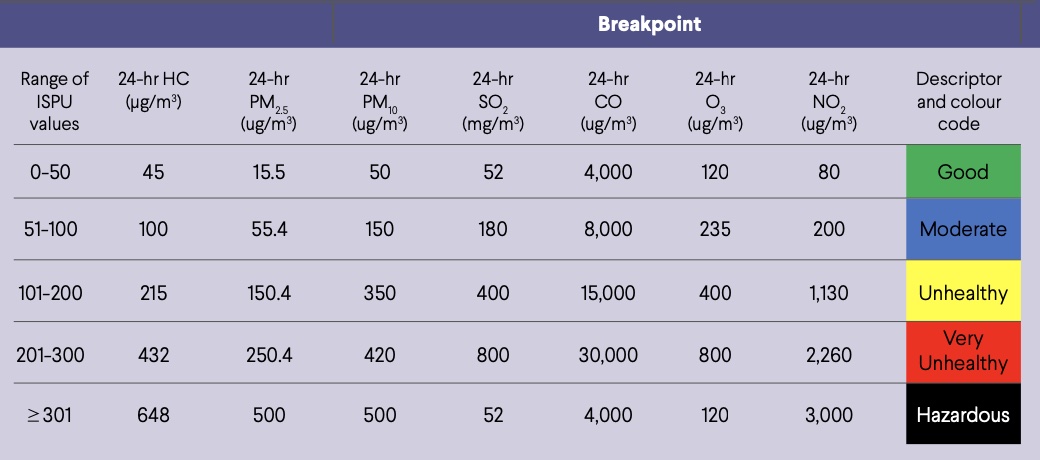
In addition to the index, each country also has ambient air quality standards to determine the limits at which air quality conditions are still good for health or not good for health, both in the short term (daily or 8-hour) and long term (annual). In Indonesia, this ambient air quality standard is regulated in a Government Regulation with the following details:
Pollutant |
Average time | Indonesia (PP 22/2021) |
|---|---|---|
| PM2.5 μg / m3 |
24-hour Annual |
55 15 |
| PM10 μg / m3 |
24-hour Annual |
75 40 |
| SO2 μg / m3 |
1-hour 24-hour Annual |
150 75 45 |
| NO2 μg / m3 |
1-hour 24-hour Annual |
299 65 50 |
| O3 μg / m3 |
1-hour 8-hour Annual |
150 100 35 |
| CO μg / m3 |
1-hour 8-hour |
10.000 4.000 |

SLCPs by CCAC
Jakarta is a region that is vulnerable to climate change. In the past few decades until now, Jakarta has experienced rising sea levels, changing rainfall patterns and increasing temperatures. If not addressed in the near future, the climate crisis in Jakarta will have direct consequences for the health and livelihoods of Jakarta residents and the Jakarta economy.
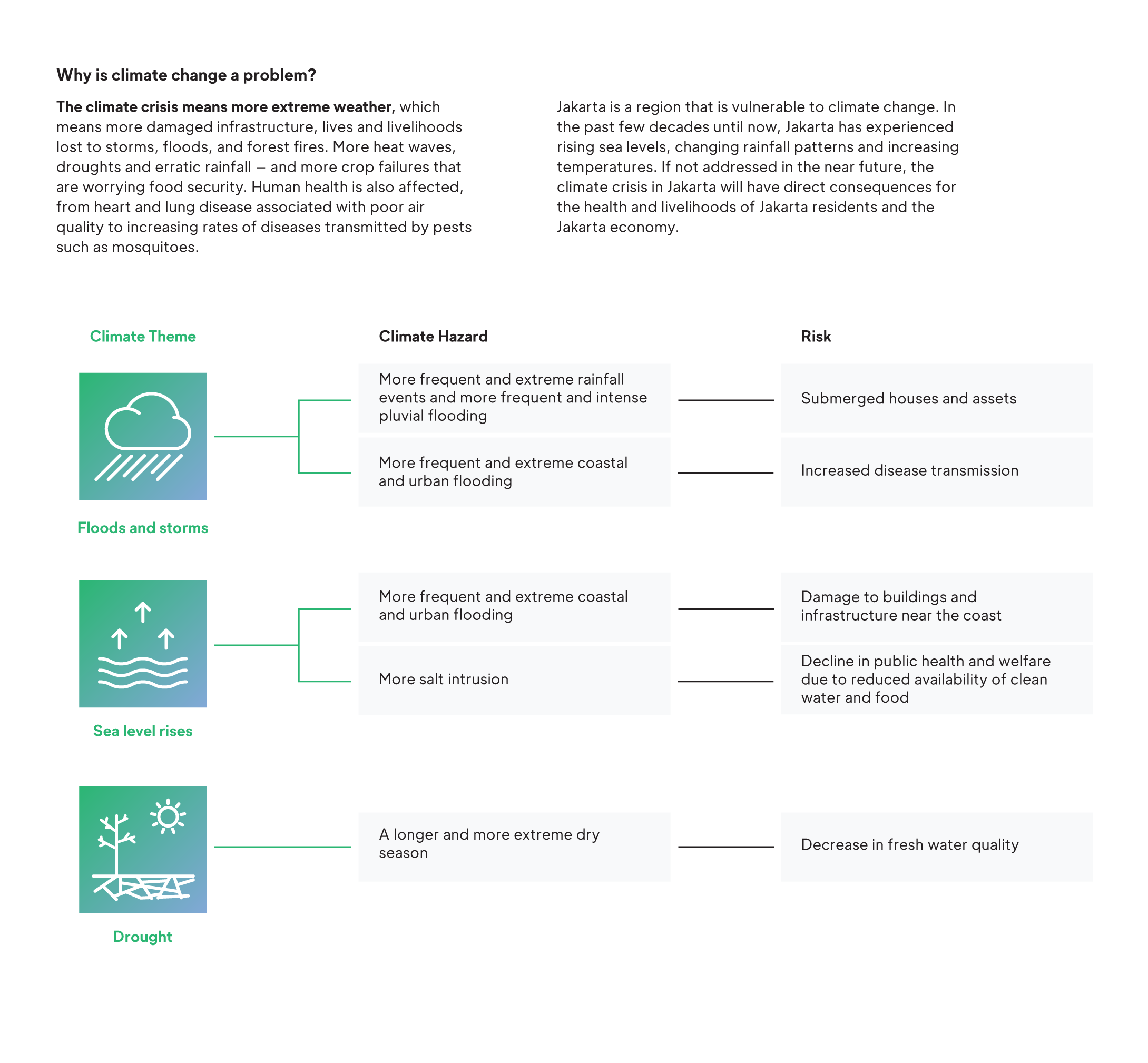
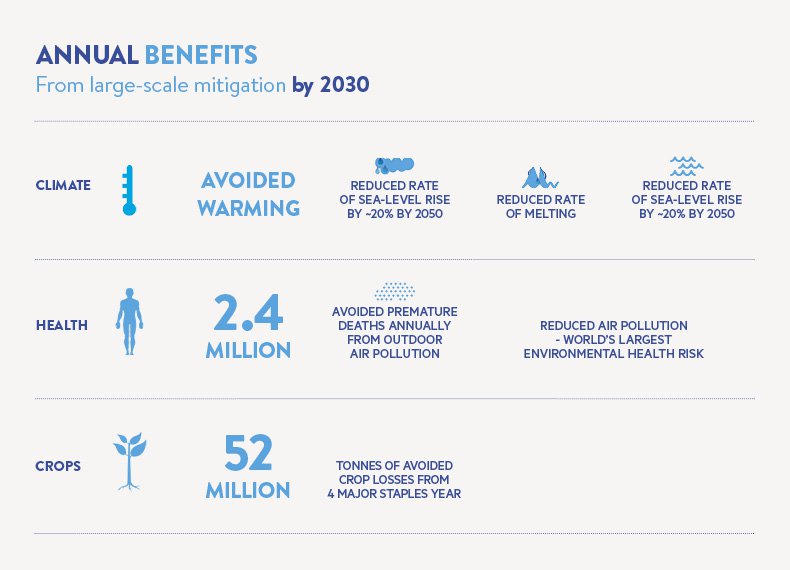
Annual Benefits from SCLP mitigation by CCAC
To find climate initiatives that you can practice in your area or daily life, you can read the Articles link on the Jakarta Rendah Emisi website.

Illustration by +Jakarta
